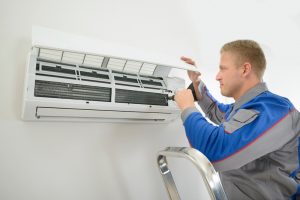 If you are considering a new heating system for your home, it is important to consult with a professional HVAC technician before making any final decisions. We understand that selecting the right system can be a daunting task—there are a lot of great options to choose from, and each has their benefits and drawbacks depending on your own individual circumstances. But don’t fret! Bayonet Plumbing, Heating, & Air Conditioning can help you select the perfect system for your needs!
If you are considering a new heating system for your home, it is important to consult with a professional HVAC technician before making any final decisions. We understand that selecting the right system can be a daunting task—there are a lot of great options to choose from, and each has their benefits and drawbacks depending on your own individual circumstances. But don’t fret! Bayonet Plumbing, Heating, & Air Conditioning can help you select the perfect system for your needs!
For many homeowners, ductless splits, also known as mini-split systems, are becoming a preferred option. These systems can be great for keeping your home warm in the winter and cool in the summer. Many Florida homeowners opt for this system for the convenience and year-round comfort! Below, we have provided some of the benefits that ductless systems have to offer. But remember, before you make any decisions be sure to contact us to schedule ductless services in Tampa, FL.
What is a Ductless Mini-Split System?
A ductless system is a heat pump that does not rely on ducts. Instead, it utilizes air handlers installed throughout the house rather than a centralized blower or coil unit. Ductless systems are able to act as both heaters and air conditioners, thus making them a popular and convenient choice. The system is made up of an outdoor condenser unit and one or more indoor units that contain the air handler and blowers that help to circulate air. Refrigerant lines are all that connect the outdoor unit to the indoor units, making installation convenient and affordable.
Benefits of a Ductless System
They’re Versatile
As mentioned above, a ductless system provides both heating and cooling without the need for ducts. If you live in an older home that does not have space for ductwork or doesn’t have it installed, a ductless system can be a great alternative.
Installation is Convenient
Installing ductwork can be a difficult and expensive process depending on the layout of your home. Installing a ductless system is less invasive and can be up and running in as little as one day.
They’re Cost Effective
Switching to a ductless system can save you and your family a lot of money. Ductless systems operate on less power than other systems simply due to the fact they recycle heated air rather than generating it from nothing. In addition, homeowners can control the temperature of the air going into each room, thus increasing efficiency. Mini-split systems allow homeowners to create “zones” in their homes, meaning they don’t have to heat or cool the rooms that aren’t being used.
They’re Energy Efficient
Since mini-splits have no ducts, they avoid the energy losses associated with the ductwork of forced-air systems. Duct losses can account for more than 30% of energy use. In addition, a ductless system is considered to be a more efficient choice than a standard window or portable unit.
Our friendly technicians at Bayonet can help you decide if a ductless split, or mini-split, system is right for your home. We offer installation, repair, and maintenance services to ensure that your new system runs efficiently and effectively for years to come!
Continue Reading
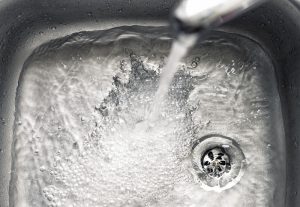 Whether it’s used for cooking, washing, or drinking, your kitchen faucet is pushed to the limit every day. We often take for granted just how much our kitchen sinks can endure. Throughout the course of a day, we turn our kitchen sinks on and off a million times, but this repeated use can quickly create problems in the faucet mechanism, leading to that steady, annoying drip.
Whether it’s used for cooking, washing, or drinking, your kitchen faucet is pushed to the limit every day. We often take for granted just how much our kitchen sinks can endure. Throughout the course of a day, we turn our kitchen sinks on and off a million times, but this repeated use can quickly create problems in the faucet mechanism, leading to that steady, annoying drip.
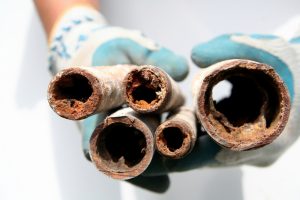 Typically, a plumbing issue results in a visit from your local plumber, who can detect and seal any leaks or clear any blockages that may exist. At some point, however, repairing leak after leak is not worth it anymore. When your plumbing system reaches a certain age, repairing or replacing just one section of piping isn’t going to cut it. Instead, you’ll need whole-house repiping.
Typically, a plumbing issue results in a visit from your local plumber, who can detect and seal any leaks or clear any blockages that may exist. At some point, however, repairing leak after leak is not worth it anymore. When your plumbing system reaches a certain age, repairing or replacing just one section of piping isn’t going to cut it. Instead, you’ll need whole-house repiping. If you are considering a new heating system for your home, it is important to consult with a professional HVAC technician before making any final decisions. We understand that selecting the right system can be a daunting task—there are a lot of great options to choose from, and each has their benefits and drawbacks depending on your own individual circumstances. But don’t fret! Bayonet Plumbing, Heating, & Air Conditioning can help you select the perfect system for your needs!
If you are considering a new heating system for your home, it is important to consult with a professional HVAC technician before making any final decisions. We understand that selecting the right system can be a daunting task—there are a lot of great options to choose from, and each has their benefits and drawbacks depending on your own individual circumstances. But don’t fret! Bayonet Plumbing, Heating, & Air Conditioning can help you select the perfect system for your needs! We know what you’re thinking: I live in Florida, why does it matter if my heater is not the best? Well, our technicians at Bayonet Plumbing, Heating & Air Conditioning are here to tell you that it does matter. If you are still operating a “not-so-great” system, you might be wasting more money than you think.
We know what you’re thinking: I live in Florida, why does it matter if my heater is not the best? Well, our technicians at Bayonet Plumbing, Heating & Air Conditioning are here to tell you that it does matter. If you are still operating a “not-so-great” system, you might be wasting more money than you think. 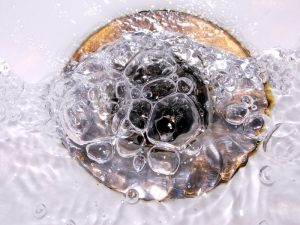 There are a lot of great perks that come with owning your own home. There is also a lot of potential for problems to develop over time. If and when you run into such problems, you want to have them resolved as soon as possible. We know that homeowners today have a lot on their plates, and there are certain headaches that we’d all rather ignore. That does not change the fact that certain issues deserve your prompt attention, though.
There are a lot of great perks that come with owning your own home. There is also a lot of potential for problems to develop over time. If and when you run into such problems, you want to have them resolved as soon as possible. We know that homeowners today have a lot on their plates, and there are certain headaches that we’d all rather ignore. That does not change the fact that certain issues deserve your prompt attention, though.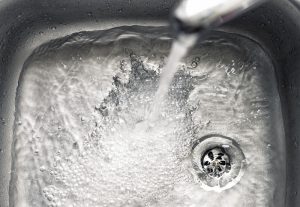 In this age where the phone in your pocket can unlock an essentially limitless amount of information, it can be easy to convince oneself that one can handle his or her own projects around the house. And you know what? Many of the projects you need done around the house can be handled in a DIY manner with a bit of research and some elbow grease. Responsible homeowners are the ones that know their limits, though. We’re guessing, for instance, that you wouldn’t try to replace your home piping system.
In this age where the phone in your pocket can unlock an essentially limitless amount of information, it can be easy to convince oneself that one can handle his or her own projects around the house. And you know what? Many of the projects you need done around the house can be handled in a DIY manner with a bit of research and some elbow grease. Responsible homeowners are the ones that know their limits, though. We’re guessing, for instance, that you wouldn’t try to replace your home piping system.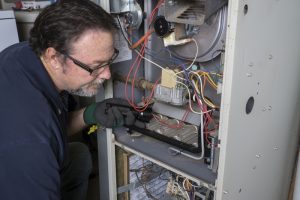 In Florida, the air conditioners in our homes are obviously working harder and much more frequently than the heating systems are. This does not mean, however, that you can afford to ignore any signs of trouble with the heater that you depend upon when temperatures do finally drop below a comfortable level in the winter. If you are serious about getting the most from your heater, you need to work with a great
In Florida, the air conditioners in our homes are obviously working harder and much more frequently than the heating systems are. This does not mean, however, that you can afford to ignore any signs of trouble with the heater that you depend upon when temperatures do finally drop below a comfortable level in the winter. If you are serious about getting the most from your heater, you need to work with a great 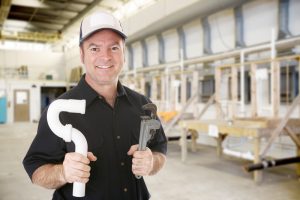 Homeowners throughout our service area know that they can turn to us to find and fix plumbing leaks in their homes. Unfortunately, some homeowners are not aware of the fact that many plumbing leaks can sneak past their defenses, doing a lot of damage to their properties before the homeowners in question even realize that there are problems, to begin with. This is the case with that most nefarious type of leak: the slab leak!
Homeowners throughout our service area know that they can turn to us to find and fix plumbing leaks in their homes. Unfortunately, some homeowners are not aware of the fact that many plumbing leaks can sneak past their defenses, doing a lot of damage to their properties before the homeowners in question even realize that there are problems, to begin with. This is the case with that most nefarious type of leak: the slab leak! There are areas in the country where heating systems are already being fired up and are running quite regularly. Here in Florida, this obviously is not the case. Our air conditioning systems are still the stars of the show, as they are throughout most of the year. That is why, even this late in the calendar year, you really need to be tuned into your air conditioning system and the way in which it is operating.
There are areas in the country where heating systems are already being fired up and are running quite regularly. Here in Florida, this obviously is not the case. Our air conditioning systems are still the stars of the show, as they are throughout most of the year. That is why, even this late in the calendar year, you really need to be tuned into your air conditioning system and the way in which it is operating.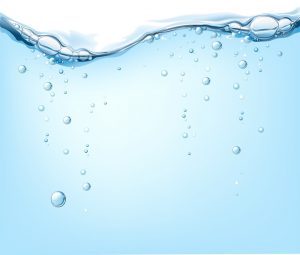 Why is it that Florida is such a popular vacation spot? Why is it that so many people decide to spend their golden years down here? It’s because of the weather and the beaches, mostly. You do not need us to tell you that our days are full of plenty of sunshine, and that temperatures stay quite warm for nearly the entire year. What you may need us to remind you of, though, is that your air conditioning system is not the only system in your house deserving of your attention.
Why is it that Florida is such a popular vacation spot? Why is it that so many people decide to spend their golden years down here? It’s because of the weather and the beaches, mostly. You do not need us to tell you that our days are full of plenty of sunshine, and that temperatures stay quite warm for nearly the entire year. What you may need us to remind you of, though, is that your air conditioning system is not the only system in your house deserving of your attention.